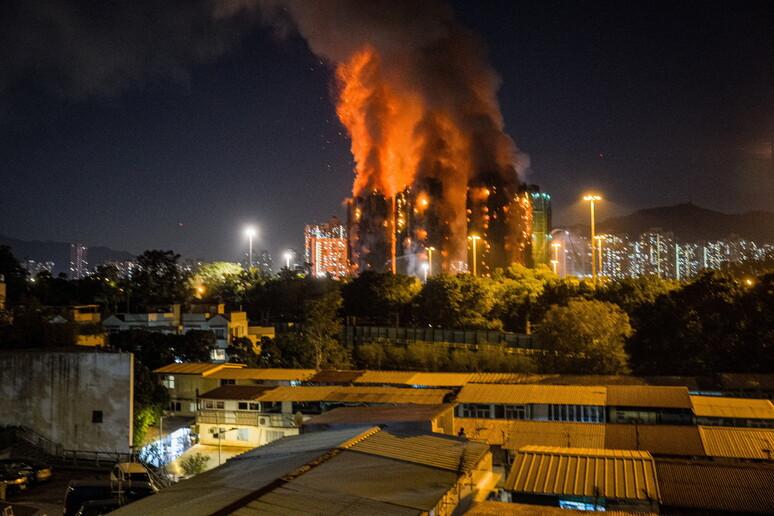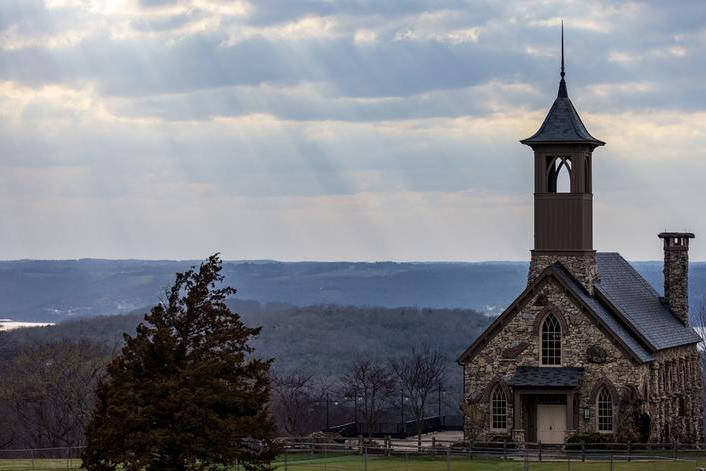A fire of catastrophic proportions has engulfed the Wang Fuk Court residential complex in Hong Kong’s Tai Po district, turning eight skyscrapers into a death trap. The budget, still provisional, speaks of at least 65 confirmed dead, including a firefighter, and almost 300 missing. The flames, which broke out in the early afternoon of Wednesday 26 November, lasted for over twenty hours, making rescue operations extremely difficult and dangerous. Local authorities declared a state of maximum emergency, mobilizing over 1,200 rescuers, 200 fire engines and 100 ambulances.
The dynamics of the disaster: how it happened
The fire broke out around 2.50pm local time (7.50am in Italy) in the Wang Fuk Court complex, a set of eight buildings of 31 floors each, for a total of 1,984 apartments and around 4,600 residents, many of them elderly. According to initial reconstructions, the flames started in a karaoke room on the ground floor of one of the buildings, and then quickly spread through the bamboo scaffolding and plastic sheets that wrapped the buildings under renovation. Bamboo, a material traditionally used in Hong Kong due to its cheapness and ease of assembly, proved to be a lethal accelerant: the canes, tied together with plastic strips, fueled the fire, which spread to seven of the eight towers of the complex.
Flammable materials and negligence Preliminary investigations highlighted the presence of polystyrene, used to seal the windows during the works, and plastic sheets that did not comply with fire safety standards. Police arrested three people — two managers and a consultant from the construction company responsible for the renovation — on charges of manslaughter due to negligence. The authorities suspect failure to comply with the rules contributed to the rapidity with which the fire spread, made even more violent by the wind and the extreme drought that hit Hong Kong in the previous days.

The human toll: dead, missing and survivors
The number of victims is destined to rise: at the moment there are 65 confirmed deaths, but there are still 279 missing. Among the deceased, many are elderly or people with mobility difficulties, who were unable to escape in time. Rescuers worked tirelessly, facing very high temperatures and the risk of collapses, to search for survivors among the rubble. Over 900 people were evacuated and transferred to temporary reception centers, while dozens of injured people, some in critical condition, are hospitalized in the city’s hospitals.
Stories of solidarity and desperation The Hong Kong community mobilized spontaneously: hundreds of volunteers organized collection points for food, clothes, medicines and psychological support. Many residents spent the night searching for news of their loved ones, often without success. «I saw the flames coming, red, and my heart burned with them», he told ad AFP a 69-year-old woman, who saved a neighbor in a wheelchair. “I didn’t hear any alarms, I just heard the screams.”
An announced disaster?
The fire in Hong Kong puts the spotlight back on the risks associated with the use of cheap but highly flammable materials in construction, especially in cities with very high population density. The Wang Fuk Court complex, built in 1983, had been under renovation for monthsbut the works had already raised protests among residents due to the lack of adequate safety measures. The authorities had announced their intention to gradually ban bamboo scaffolding months ago, but the decision had not yet been implemented.
A tragic precedent The disaster closely resembles that of Grenfell Tower in London in 2017, where 72 people lost their lives due to a fire propagated through non-compliant coatings. Even in that case, the investigations revealed negligence and non-compliant materials. In Hong Kong, the Anti-Corruption Commission has launched an investigation to verify possible irregularities in the renovation works of the Wang Fuk Court.
Hong Kong Governor John Lee expressed “deep sorrow” over the tragedy and promised a thorough investigation. Chinese President Xi Jinping sent his condolences to the families of the victims and asked them to “do everything possible to put out the fire and minimize human and material losses.”. Meanwhile, the city is wondering about its responsibilities and the measures to be taken to prevent such a tragedy from happening again.
Hong Kong, a city at risk
With a population density among the highest in the world (over 7,100 inhabitants per km², which triples in urban areas)Hong Kong is particularly exposed to the risk of fires in overcrowded buildings. Despite advances in safety regulations, the combination of flammable materials, unregulated construction work and an elderly population makes the city vulnerable to disasters like Tai Po.


The fire in Hong Kong is not just a tragedy, but a warning. The images of skyscrapers engulfed in flames, the stories of the missing and survivors, the unanswered questions about responsibilities remain imprinted like an indelible mark. While the rescue operations continue, the city rallies around the victims, but also around the awareness that, without radical changes, the risk of new disasters remains real.
What will happen now? Investigations will continue to ascertain the precise causes of the fire and any criminal liability. Meanwhile, Hong Kong will have to face not only the material reconstruction, but also the social and psychological reconstruction of a forever scarred community.










